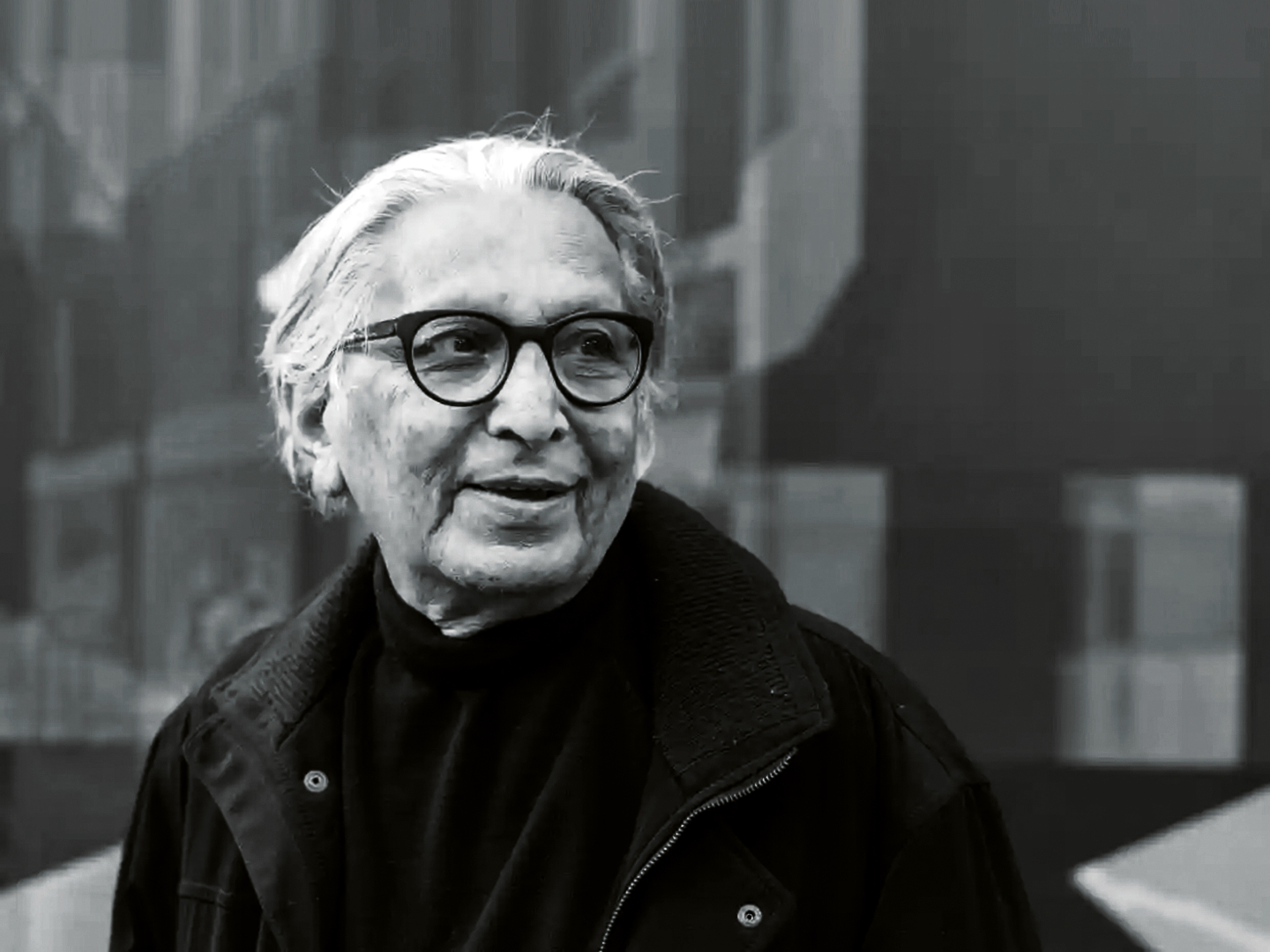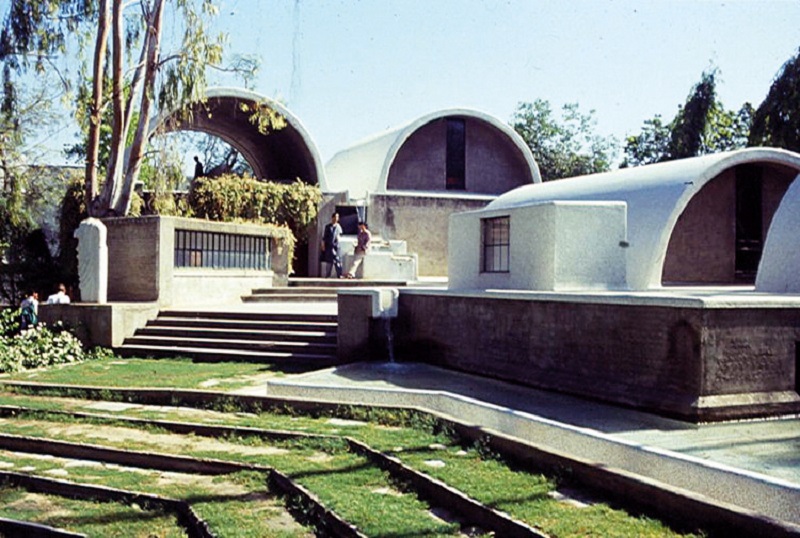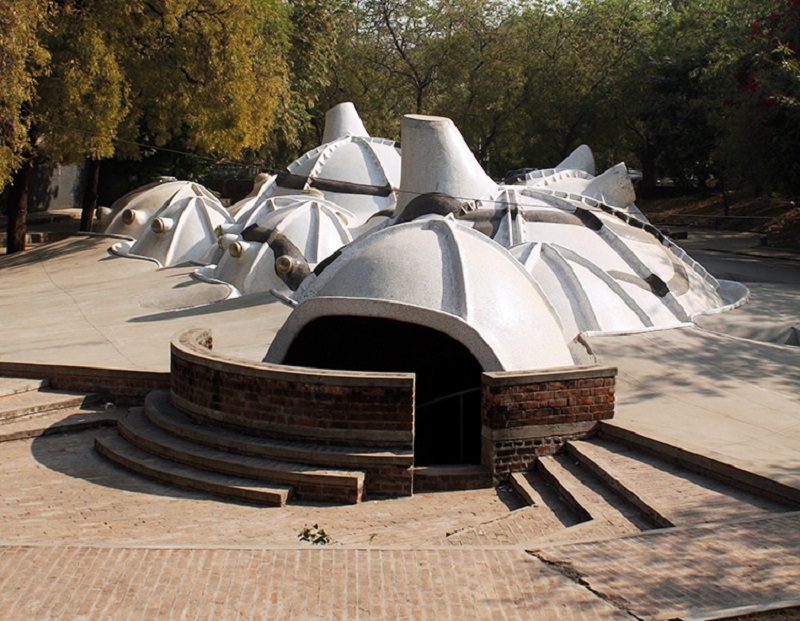
"It is Doshi's story that allows us to set our own parameters, that has forced us to dream, that has asked us to search and seek again and again that we will never forget"
On the morning of Jan 24, Balkrishna Vithaldas Doshi left his body and continued on his journey, leaving us with both the memories of a man ... and an idea.
I believe very special people are implanted in our memories at birth. So it is a kind of recollection from our memories even before we meet them for the first time. This is true only for a few unique people on this earth and it was so when I first met Doshi in Ahmedabad, India, in 1968.
I had come to India on a Fulbright Scholarship from MIT (Massachusetts Institute of Technology) and lived in Ahmedabad, working with Doshi at the then School of Architecture. Thereafter, I taught at Harvard for three years before returning once again to Ahmedabad to create the School of Planning with Doshi, which is now the Faculty of Planning at CEPT University, which morphed out of the various schools on campus. I am now on the board of management and have just completed two buildings on site that pay homage to Doshi’s work by using the same materials palette, the same floor-to-floor heights and the same studio widths as his famous School of Architecture.
When one met Doshi, even over a small matter, there would be a glint in his eye that hinted at something inevitable. It seemed through mere glances and passing smiles that larger concerns were demanded from us, transcending the petty concerns of the moment. Rather than two people merely talking, Doshi was dealing with the collective concerns of humanity and thinking about how a little problem is but a sliver, or a sign, of the greater human condition.
There was always a sense of vision, of the future and excitement about how we were never dealing with trivial or mundane issues, but rather unravelling the essence of the universe. The more one came to know Doshi, the more apparent contradictions seemed to fall into order and unity. It is within these seeming contradictions that the essence of Doshi lies. But just what are these contradictions?
sangath.jpg

DOSHI WAS BOTH SIMPLE + SOPHISTICATED
Doshi told his stories well and he was a great story-teller, often using such simple words that his innocence obscured a great sophistication. Each building he described and each question he answered were usually analysed through the analogy of a folk narrative, a riddle of life, or a passage from the epics. His range and grasp of tales belied an underlying encyclopaedic knowledge.
DOSHI WAS BOTH A TRADITIONAL INDIAN + A GLOBAL MAN
He lived very simply within the great Indian tradition. Seeing his home, one felt he could be in a relaxed village house lost in a rural place. Yet it was his great understanding of things that made matters appear simple. He brought the reality of things down to their basics, rendering them fundamental yet truly universal and global.
DOSHI WAS A WISE SAGE YET HE THOUGHT LIKE A CHILD
Even at 95, there was a child hidden within Doshi’s face; it was evident in the way he talked and the way he sketched. But behind that childlikeness, that playfulness, was the wisdom of an ancient sage. His truth always presented itself with the simplicity of a child.
DOSHI SEEMED FREE AS A BIRD YET HAD THE SELF-DISCIPLINE TO ACHIEVE
Doshi always appeared relaxed, free and unfettered and was not bound to any ideology or “ism”. He seemed almost bindas, like a free bird or a traveller without any destination, knowing only the joy of moving and exploring. Yet there is a contradiction: he laboured to start institutions based on discipline, built structures that only hard work can bear, and forged human relationships that have matured over decades of devotion. Doshi was free in his mind, yet a slave to his devotions.
husain-doshi_gufa_ahmedabad_an_underground_art_gallery.jpg

DOSHI WAS A MASTER OF THE SMALL YET PONDERER OF THE INFINITE
If he drew a small bird, it would be in flight; it would be all birds flying in one image. If we too were watching it, we would feel as if we were in flight and experiencing transcendental beauty and the unimaginable! Doshi dealt with the tiny seeds of things, yet in them lay the essence of all things.
There is only one form of good luck in life and that is to have good teachers. Good teachers inspire us! All of us who knew Doshi shared the smile of good luck. Doshi made us aware of the good in ourselves, and we always felt very happy about this realisation! He catalysed some deep understanding of our essential possibilities about who we could be and that is what is known as “inspiring”. It is our feeling good, and our knowledge of ourselves, that makes every one of us who knew him want to celebrate Doshi’s life.
The life of any person is a dubious experiment. Life can be fleeting, meaningless and insignificant. It seems so amazing that anything can exist or develop! Yet Doshi’s life was an epic journey: his boyhood in Pune’s old city; his student days at the Sir J J College of Architecture in Mumbai; a brief period in London where he had the good fortune to meet his guru, Le Corbusier and then his years in Paris after, working together with the great architect; his early days in Ahmedabad, moving about in the heat on a bicycle to supervise Le Corbusier’s buildings; his marriage to Kamala; founding his studio Vastu Shilpa; starting the School of Architecture at Ahmedabad; working with Louis Kahn on the Indian Institute of Management; wonderful friendships; making great buildings and garnering numerous prizes and awards; being surrounded by a loving family; growing a single School of Architecture into the Centre for Environmental Planning Technology and then into a university; and, of course, great international recognition!
Doshi’s life was a psychic process that has only partly been revealed and will continue unfolding, essentially consisting of two beings inhabiting one body. One being was the simple man, the friend, the husband, the father and the architect. Yet, beyond the memories of encounters, there was another Doshi. There was the Doshi who was the avatar of imagination; there was the Doshi who was the manifestation of our dreams; it was like two beings always walking together, inhabiting the same space, knowing us as a friend, but playing on our spirits like a phantom!
On one level, Doshi was an object, like a tree, a stone, a mountain or a human being. On another level, he remains, even after death, like a sunrise bursting over snow-clad mountains, awakening our inner spirit and making us question who we are. When we were standing next to Doshi, we felt there were two beings next to us: one concerned with the day-to-day matters of life, the other drifting off into transcending material being. It was this second personality, this “other persona”, that formed a classic myth that carries within it the eternal spirit, which lights up one’s imagination, one’s inspiration and one’s desire to be!
Thus, on this day of Doshi’s leaving us, we must consider his personal myth, which will live forever; it will be a source of continuous celebration and inspiration. We must celebrate it without trying to understand it. We can only tell stories and recall incidents. Whether the stories are true has no bearing and is of no significance! The only thing that matters is we understand Doshi's story and his truth. The test of a man is in the message of his myth; only his inner vision, which projects out across the vast universe and is etched into history, can have any meaning!
I came to India 55 years ago in search of a guru, in search of truth and in search of a believable myth. I was so fortunate to find all of these in one living being, whose spirit still lives amongst us all here today: my guru, our guru, Balkrishna Doshi. We last met a year ago, with me spending a few hours at Doshi’s home with him. He had not met anyone during the pandemic. Whenever he visited Pune, he often stayed at India House, my place here. We had a lifelong relationship, sharing guru–shishya interaction and love.
Every life is the story of the self-realisation of the unconscious. Here, Doshi’s life was unique. Everything in the unconscious seeks outward manifestation, and his personality also desires to evolve out of its unconscious condition and experience itself as a whole. Let us not employ the language of science or the words of measure to trace Doshi’s growth, his contribution and his GIFT. Let us celebrate the myth we all own and that is a part of our being, which has become folklore and borders all of our imaginations and possibilities. It is Doshi's story that allows us to set our own parameters, that has forced us to dream, that has asked us to search and seek again and again that we will never forget.
Christopher Benninger is the principal architect of CCBA Designs.
This article first appeared on Feb 6, 2023 in The Edge Malaysia.


